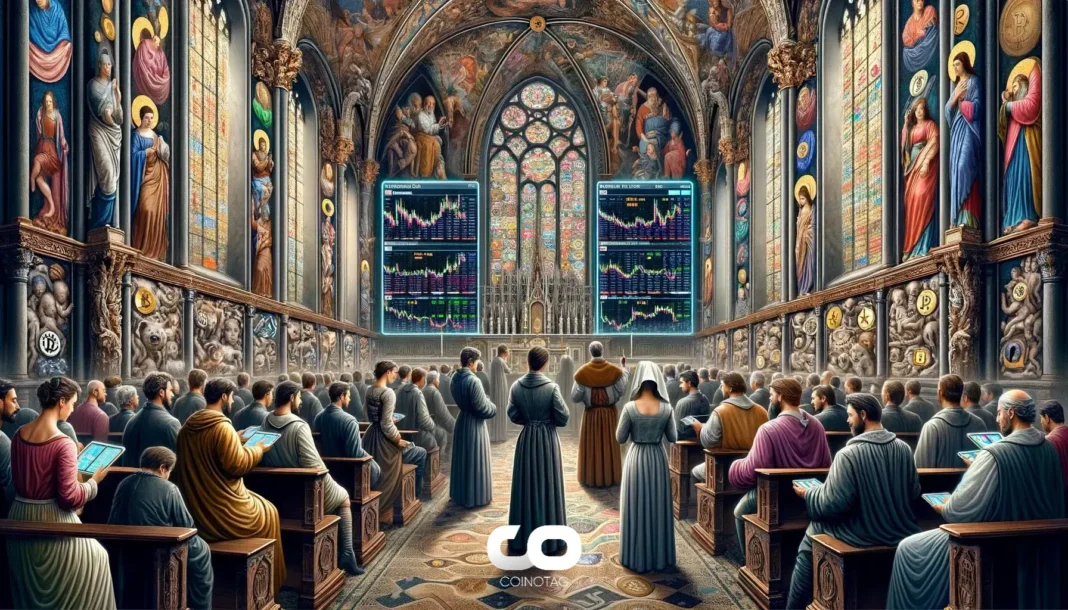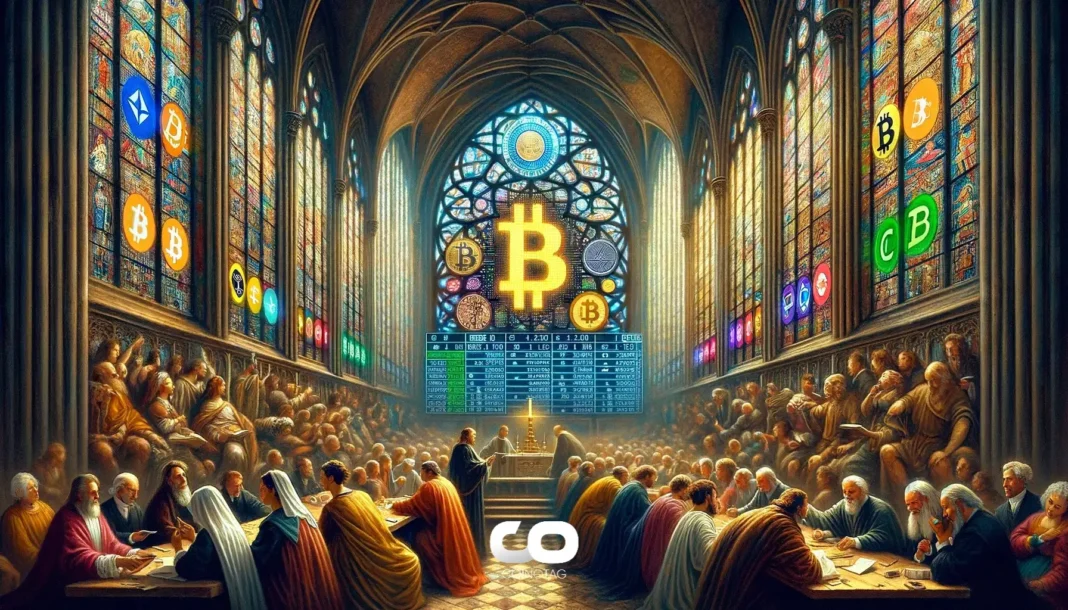| COINOTAG recommends • Exchange signup |
| 💹 Trade with pro tools |
| Fast execution, robust charts, clean risk controls. |
| 👉 Open account → |
| COINOTAG recommends • Exchange signup |
| 🚀 Smooth orders, clear control |
| Advanced order types and market depth in one view. |
| 👉 Create account → |
| COINOTAG recommends • Exchange signup |
| 📈 Clarity in volatile markets |
| Plan entries & exits, manage positions with discipline. |
| 👉 Sign up → |
| COINOTAG recommends • Exchange signup |
| ⚡ Speed, depth, reliability |
| Execute confidently when timing matters. |
| 👉 Open account → |
| COINOTAG recommends • Exchange signup |
| 🧭 A focused workflow for traders |
| Alerts, watchlists, and a repeatable process. |
| 👉 Get started → |
| COINOTAG recommends • Exchange signup |
| ✅ Data‑driven decisions |
| Focus on process—not noise. |
| 👉 Sign up → |
-
Despite Nvidia’s record-breaking market capitalization surpassing $3.7 trillion, AI-focused cryptocurrencies have experienced a significant downturn, challenging previous market assumptions.
-
The traditional correlation between Nvidia’s stock performance and AI crypto tokens is weakening, indicating a potential market decoupling influenced by investor preference for utility over speculation.
-
According to COINOTAG, industry leaders emphasize the importance of practical applications in AI crypto projects, urging a shift from token launches to scalable, real-world solutions.
Nvidia’s historic rise contrasts with a 28% slump in AI crypto tokens, highlighting a market shift towards utility-driven projects and a fading NVDA-AI token correlation.
Nvidia’s Market Dominance Highlights Divergence with AI Crypto Tokens
On June 26, 2025, Nvidia (NVDA) reached an unprecedented stock price exceeding $154, propelling its market capitalization beyond $3.7 trillion. This milestone underscores the company’s pivotal role in powering AI advancements through its high-performance GPUs, which remain indispensable for AI model training and deployment. Despite this, the AI token sector within the cryptocurrency market has not mirrored Nvidia’s success, experiencing a decline of over 28% in the same timeframe.
This divergence suggests a decoupling phenomenon where Nvidia’s stock performance no longer serves as a reliable indicator for AI-related crypto assets. The disparity can be attributed to the tangible demand for Nvidia’s hardware contrasted with the speculative nature of many AI tokens, which lack established use cases and sustainable business models. Investors appear increasingly discerning, favoring projects that demonstrate concrete utility and scalability.
Investor Sentiment Shifts Toward Utility in AI Crypto Projects
The waning correlation between Nvidia and AI tokens reflects a broader market maturation. Early enthusiasm for AI tokens was driven by speculative hype and optimistic projections about blockchain-based AI agents revolutionizing transactions. However, many such projects have failed to deliver measurable impact or adoption, leading to investor skepticism.
| COINOTAG recommends • Professional traders group |
| 💎 Join a professional trading community |
| Work with senior traders, research‑backed setups, and risk‑first frameworks. |
| 👉 Join the group → |
| COINOTAG recommends • Professional traders group |
| 📊 Transparent performance, real process |
| Spot strategies with documented months of triple‑digit runs during strong trends; futures plans use defined R:R and sizing. |
| 👉 Get access → |
| COINOTAG recommends • Professional traders group |
| 🧭 Research → Plan → Execute |
| Daily levels, watchlists, and post‑trade reviews to build consistency. |
| 👉 Join now → |
| COINOTAG recommends • Professional traders group |
| 🛡️ Risk comes first |
| Sizing methods, invalidation rules, and R‑multiples baked into every plan. |
| 👉 Start today → |
| COINOTAG recommends • Professional traders group |
| 🧠 Learn the “why” behind each trade |
| Live breakdowns, playbooks, and framework‑first education. |
| 👉 Join the group → |
| COINOTAG recommends • Professional traders group |
| 🚀 Insider • APEX • INNER CIRCLE |
| Choose the depth you need—tools, coaching, and member rooms. |
| 👉 Explore tiers → |
Industry voices, including former Binance CEO Changpeng Zhao, advocate for a pragmatic approach: launching tokens only when supported by significant scale and real-world application. This perspective aligns with the growing investor focus on platforms like Bittensor, NEAR, and Filecoin, which offer decentralized AI training, robust blockchain infrastructure, and secure data storage solutions respectively. These projects exemplify the shift from speculative token launches to foundational technologies with tangible benefits.
Market Implications and Future Outlook for AI Crypto Tokens
The current market dynamics underscore the necessity for AI crypto projects to prioritize innovation and utility over token proliferation. As Nvidia continues to capitalize on hardware demand driven by AI’s expanding footprint, AI tokens must demonstrate clear value propositions to attract and retain investor interest.
| COINOTAG recommends • Exchange signup |
| 📈 Clear interface, precise orders |
| Sharp entries & exits with actionable alerts. |
| 👉 Create free account → |
| COINOTAG recommends • Exchange signup |
| 🧠 Smarter tools. Better decisions. |
| Depth analytics and risk features in one view. |
| 👉 Sign up → |
| COINOTAG recommends • Exchange signup |
| 🎯 Take control of entries & exits |
| Set alerts, define stops, execute consistently. |
| 👉 Open account → |
| COINOTAG recommends • Exchange signup |
| 🛠️ From idea to execution |
| Turn setups into plans with practical order types. |
| 👉 Join now → |
| COINOTAG recommends • Exchange signup |
| 📋 Trade your plan |
| Watchlists and routing that support focus. |
| 👉 Get started → |
| COINOTAG recommends • Exchange signup |
| 📊 Precision without the noise |
| Data‑first workflows for active traders. |
| 👉 Sign up → |
Moving forward, the AI crypto sector is poised for a phase of consolidation and refinement, where only projects with verifiable use cases and scalable solutions will thrive. This evolution may ultimately strengthen the sector by fostering sustainable growth and aligning investor expectations with technological realities.
Conclusion
The stark contrast between Nvidia’s soaring market valuation and the declining AI token market highlights a pivotal moment for AI-related cryptocurrencies. The diminishing correlation signals a market recalibration, emphasizing the importance of practical utility and scalability. For AI tokens to regain momentum, developers and investors alike must focus on delivering real-world solutions that complement the hardware-driven AI ecosystem Nvidia exemplifies. This strategic shift promises a more resilient and mature AI crypto market in the years ahead.
| COINOTAG recommends • Traders club |
| ⚡ Futures with discipline |
| Defined R:R, pre‑set invalidation, execution checklists. |
| 👉 Join the club → |
| COINOTAG recommends • Traders club |
| 🎯 Spot strategies that compound |
| Momentum & accumulation frameworks managed with clear risk. |
| 👉 Get access → |
| COINOTAG recommends • Traders club |
| 🏛️ APEX tier for serious traders |
| Deep dives, analyst Q&A, and accountability sprints. |
| 👉 Explore APEX → |
| COINOTAG recommends • Traders club |
| 📈 Real‑time market structure |
| Key levels, liquidity zones, and actionable context. |
| 👉 Join now → |
| COINOTAG recommends • Traders club |
| 🔔 Smart alerts, not noise |
| Context‑rich notifications tied to plans and risk—never hype. |
| 👉 Get access → |
| COINOTAG recommends • Traders club |
| 🤝 Peer review & coaching |
| Hands‑on feedback that sharpens execution and risk control. |
| 👉 Join the club → |
| COINOTAG recommends • Members‑only research |
| 📌 Curated setups, clearly explained |
| Entry, invalidation, targets, and R:R defined before execution. |
| 👉 Get access → |
| COINOTAG recommends • Members‑only research |
| 🧠 Data‑led decision making |
| Technical + flow + context synthesized into actionable plans. |
| 👉 Join now → |
| COINOTAG recommends • Members‑only research |
| 🧱 Consistency over hype |
| Repeatable rules, realistic expectations, and a calmer mindset. |
| 👉 Get access → |
| COINOTAG recommends • Members‑only research |
| 🕒 Patience is an edge |
| Wait for confirmation and manage risk with checklists. |
| 👉 Join now → |
| COINOTAG recommends • Members‑only research |
| 💼 Professional mentorship |
| Guidance from seasoned traders and structured feedback loops. |
| 👉 Get access → |
| COINOTAG recommends • Members‑only research |
| 🧮 Track • Review • Improve |
| Documented PnL tracking and post‑mortems to accelerate learning. |
| 👉 Join now → |







